Example pages with explanations
© Antimoon
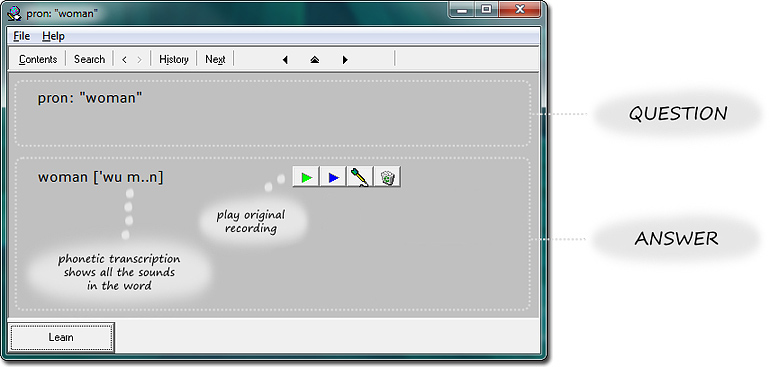
This is the simplest kind of item.
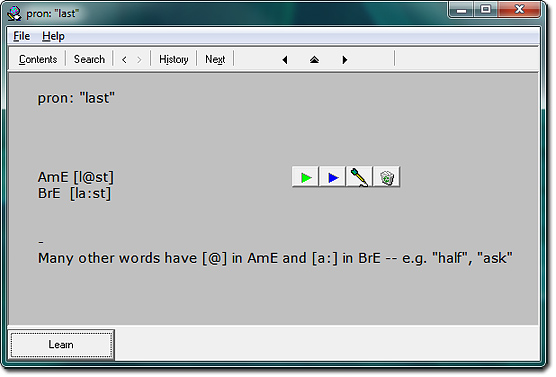
First, the American version of the pronunciation. Then the British version.
The American version has an @ sound, the British version has
an a: sound.
The note at the bottom reminds you that this happens in many English words.
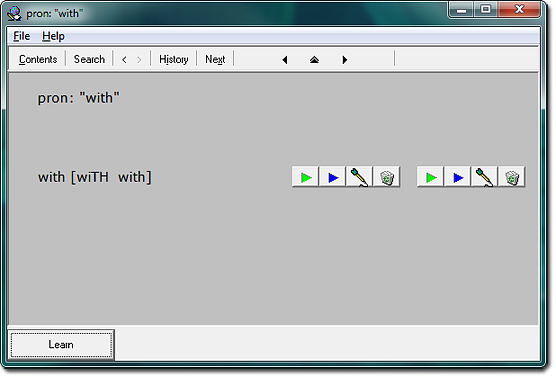
With can be pronounced [wiTH] or [with] (in all kinds of English).
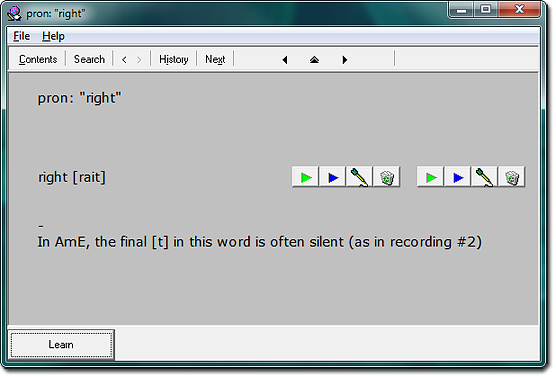
In American English, right (and many other words) are very often pronounced without
the final t.
This “silent version” is not reflected in phonetic transcriptions in dictionaries, so
in PerfectPronunciation, there are two recordings and one transcription.
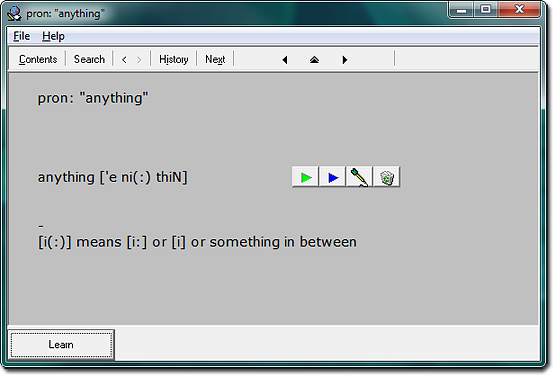
The transcription for anything uses the special symbol
i(:), so we explain it in a short note.